STAKEHOLDER INTERVIEWSPerspectives from 15 global health leaders on GHIT's catalytic role and
Japan's transformational contributions to global health R&D
DISCOVERY
03
Prof. Kiyoshi Kita
Professor Emeritus, The University of Tokyo
Professor and Dean, Nagasaki University
School of Tropical Medicine and Global Health
“Through my work in the field in Paraguay, I became hyper aware of the way all these diseases take away patients' quality of life, as well as the elements that are necessary for economic development, growth of children, and a nation's prosperity.”
What drove you to make parasitology and infectious diseases your life's work?
As a graduate student, I focused purely on biochemical research. My doctorate was on a discovery related to energy metabolism using E. Coli, but I suspected that a similar mechanism would be found in higher organisms, which ultimately led me to study parasites.
After earning my doctorate, I worked as an assistant professor at The University of Tokyo School of Science. Then, beginning in 1983, I got a position at the Department of Parasitology of Juntendo University and started conducting basic research on parasites. About a year and a half later, I went to Paraguay as the team leader of a Japan International Cooperation Agency (JICA) medical cooperation project. For the next couple of years, I conducted epidemiological surveys of patients with Chagas disease and Leishmania in Paraguay.
Before I would head out to conduct a field survey, I would usually have a meeting with the Paraguayan village leader. Once one of those leaders once asked, “What do you do if the blood test result is positive?” It stumped me. Although some medications for these diseases do exist, the side effects are quite severe. It has been nearly 30 years since I was first asked that question, and unfortunately there have been very few medical advances.
Because Chagas disease and Leishmania are not immediately lethal, research is not prioritized. This is common for Neglected Tropical Diseases (NTDs), whose symptoms tend to progress gradually. However, it is comparatively much easier to get research funding for diseases such as malaria, which kills patients quickly without any intervention. Research funding is critical to promoting innovation in the form of new and improved therapeutics. Through my work in the field in Paraguay, I became hyper aware of the way all these diseases take away patients' quality of life, as well as the elements that are necessary for economic development, growth of children, and a nation's prosperity.
When I returned to Japan, I decided to dedicate myself to drug discovery for parasitic diseases through basic and applied research. Over the ten years that have since passed, the concept of global health has gradually gained more attention and traction, along with globalization, and the field of parasitology has become extremely dynamic. When I finished graduate school, I never dreamed I would be doing the work I am pursuing today. It is inspiring to see my fundamental interest leading to something that helps others.
“To continue the important work of eradicating parasitic diseases and infectious diseases from the world, research and development and public health measures are all essential.”
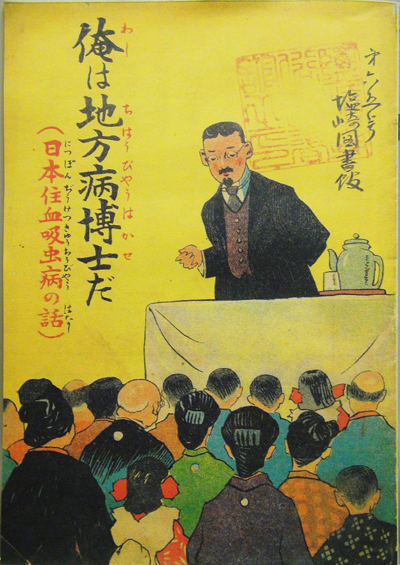
Can you share some background on the history of infectious diseases in Japan?
Nagasaki is a port city, and has suffered from many diseases that were carried in on foreign ships. Infectious diseases have existed all over the world, but since Japan is an island nation, we were relatively well protected, geographically. However, as foreign ships arrived, there was, for example, an outbreak of diarrhea. Additionally, Kyushu, which is the third biggest island of Japan and most southwesterly of its four main islands, is relatively close to the tropics, and temperatures are high, meaning that various pathogens can flourish. It is especially well-suited as a habitat for vectors that carry pathogens, such as mosquitos. As infectious diseases are common in temperate to tropical regions, the East Asia Research Institute of Endemics (later renamed the Institute of Tropical Medicine at Nagasaki University) has played an important role in research on and countermeasures against such diseases.
Infectious disease research in Japan has developed gradually. Dr. Kiyoshi Shiga discovered Shigella in 1897. In the field of parasitology, Dr. Keinosuke Miyairi discovered the intermediate host for Japanese schistosomiasis, Miyairi Gai (Oncomelania hupensis nosophora), in 1913, which was essential to understanding the disease's complicated life cycle. Such scientific discoveries have enabled critical public health and prevention measures. For example, in the case of schistosomiasis, to kill Miyairi Gai, footpaths between rice fields were paved with concrete, and patients were treated with Praziquantel. Schistosomiasis has been completely eradicated in Japan, with the last case being reported in 1978 in Yamanashi prefecture. Unfortunately, it still affects millions in the developing world.
There was a time when over 95% of people in Japan were infected by Soil-transmitted helminths, especially after World War II. To tackle this, the public, private, and academic sectors worked together to take stool samples and deworm affected patients, leading to the present infection rate of below 0.1%.
It is also well-known that Takamori Saigo, one of the most influential samurai in Japanese history, was suffering from hydrocele of testis as a result of contracting lymphatic filariasis in his later years, making horseback riding impossible. It has been said that because of this, toward the end of the Satsuma Rebellion (in 1877), he had to return to Kagoshima in a litter. Actually, filariasis was a major problem in Kyushu, Shikoku, and Okinawa before its eradication in the mid-1980s.
“Having Japanese and international research groups form a partnership to write the proposal for product development is important for the globalization of Japanese academia.”
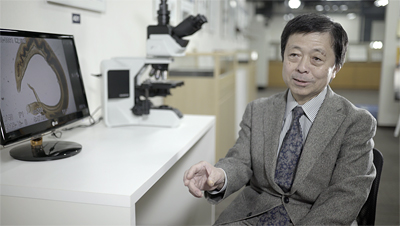
Please expand on Japan's efforts to eradicate infectious diseases such as lymphatic filariasis over the past century.
When a person is infected, the filarial parasite's larvae, microfilaria, appear in blood at night. Therefore, people gathered in public halls at night so that their blood could be sampled. After effective treatment was discovered in 1947, infected patients were immediately treated with Diethylcarbamazine. In Okinawa, it has always been common to collect rain water, which can lead to the proliferation of mosquito larvae and create hotbeds for mosquito breeding. Since mosquitos spread filariasis, measures were necessary to prevent mosquito breeding and bites.
Experts at the East Asia Research Institute of Endemics (which I mentioned earlier), regional public health centers, public health institutes, and medical residents all worked together to steadily and thoroughly eradicate infectious diseases from these regions. Not only the efforts in these areas, but also nation-wide efforts conducted throughout Japan to eradicate parasitic diseases. This is an example of the Japanese public health system and basic and clinical research on parasites successfully working together. Thanks to such collaboration, parasitic diseases such as malaria, schistosomiasis, and lymphatic filariasis have been eradicated in Japan.
Furthermore, with the efforts put forth by the country's public, private, and academic sectors, Japan's experiences and know-how were shared around the world and adapted for developing country contexts. To continue the important work of eradicating parasitic diseases and infectious diseases from the world, research and development and public health measures are all essential.
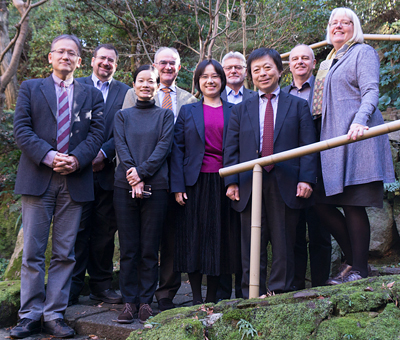
What do you see as the core strengths of Japanese academia?
Japan's strength is its perseverance. It may not be glamorous, but we use our brains to establish a strategy and conduct thorough basic research. In addition, we have a wonderful facility called SPring-8 in Japan, where we are able to design superior drugs using cutting-edge science and technology. We are fortunate to be able to conduct studies on diseases that are no longer present in Japan using the cutting-edge scientific techniques of Japan.
A good example of such innovation is research conducted by Dr. Yoshinori Osumi, a Nobel Laureate who discovered autophagy after observing yeast under an optical electron microscope. I was at the same laboratory as Dr. Osumi for six years, where I heard him frequently emphasize the importance of basic research. At the time, we were at The University of Tokyo School of Science. When we were having a discussion, if I said “That's useful,” Dr. Osumi often joked “Your science is second rate,” In a way that conveyed that he actually meant the opposite. Dr. Satoshi Omura (another Nobel Laureate, who discovered ivermectin) of Kitasato University would often respond similarly.
Personally, I believe that careful basic research is essential to making the world a better place. For example, if we could understand the characteristics of malaria larvae as an organism through detailed basic research, we could figure out when exactly malaria develops resistance to a drug. If we skip that process, we may not be able to prevent or combat resistance as effectively.
It seems that in Japan, attitudes toward and priorities for basic science have shifted recently, even though basic research does not typically deliver “quick wins.” This is a very positive development as support for strengthening basic science, with a long-term rather than short-term view, is essential. I hope such a long-term view toward support will continue far into the future.
How did you come to be Chair of the GHIT Fund Selection Committee?
When I first heard rumors that GHIT would be established, I was excited and wanted to submit my own research for potential funding. As I am an active researcher myself, I am always grateful for an opportunity to receive research funding. However, in 2012, an official from the Ministry of Health, Labour and Welfare and Ministry of Foreign Affairs of Japan visited me and asked if I could Chair the Selection Committee. I felt a duty to leverage my experience to support this effort and realized that I could contribute more to the overall mission on the side of selection than as a researcher. In the end, I accepted the position as the Chair.
How would you describe your leadership of the Selection Committee, which consists of both international and Japanese members?
Rather than immediately imposing my own opinions, I focus on sharing the environment and context of Japan with non-Japanese members of the Committee. International members may not be aware of key issues and developments in Japan that make an impact on each partnership's approach to their research. For example, I try to convey that this particular researcher is doing superior work in the area of basic research, or that a Japanese company that may not be well-known internationally has traditionally developed effective antibiotics.
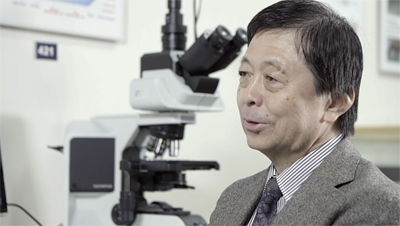
How does GHIT's proposal evaluation process work?
GHIT's domestic and international external reviewers anonymously evaluate proposals before the Selection Committee makes their own evaluation. I realize that this is a lot of work for external reviewers, but their close read and detailed comments on proposals are critical. While the Selection Committee members also objectively evaluate proposals, it is extremely helpful to be able to take into account and understand diverse and expert opinions of external reviewers as a reference.
Such an evaluation system is also used by Kaken, which houses a set of scientific research grants from Japan's Ministry of Education, Culture, Sports, Science and Technology and the Japan Society for the Promotion of Science. Nevertheless, there is sometimes a large gap between the first and second stages of evaluation. When the expertise of the reviewers is not consistent with the proposal, evaluation and selection may not be accurate or appropriate. In the present GHIT evaluation system, there are three external reviewers per proposal, the quality of evaluation and diversity of perspectives is guaranteed. In that sense, I believe that this system is very effective.
Development partnerships with proposals that are evaluated highly by external reviewers and Selection Committee members are invited to send a representative to be interviewed by the Selection Committee in person. I believe that this is a fair system that selects good proposals.
How do interviews with the Selection Committee work?
In the case of being interviewed by the Selection Committee, I think that Japanese principle investigators who have research experience in the West can communicate effectively about their science and plan for the product development. However, it is not so easy for those who are not fluent in English to pitch their ideas to and answer questions from the Selection Committee. Japanese researchers have grappled with the language barrier in the past. However, since English is the accepted global language for science, Japanese researchers must adapt.
For example, at an academic conference, you present your own research results and engage in discussion with other experts. At GHIT, however, we focus on product development for drugs, vaccines and diagnostics. You must not only explain all scientific components of the research in detail to non-experts, but you must also clearly delineate the pathway from research to productization. Honestly, I think that this is challenging for Japanese academia. In that sense, having Japanese and international research groups form a partnership to write the proposal for product development is important for the globalization of Japanese academia.
“All in all, I study parasitology because it is a challenging field and it can help transform global health. This is my motivation.”
How do you feel about using milestones and Stage-Gates as evaluation tools for GHIT's investments?
I think that the use of milestones and Stage-Gates is becoming more common in Japanese research organizations and that the GHIT evaluation system has been a key catalyst in bringing about this shift. Since many people do apply for GHIT investments, the institution's measurements of success have likely had a ripple effect onto other domestic institutions. GHIT's requirement of a partnership between a Japanese and international entity has also had an impact on Japanese institutions. Since several proposals are now in the clinical trial stage, I look forward to seeing concrete results in the near future. If the pace of development becomes stagnant, we may have to review the present progress monitoring and evaluation system.
For the past four years, the pace of the research in which GHIT invests has maintained strong momentum. I believe GHIT's careful investment selection process has played a role in this, as has the thorough monitoring GHIT conducts. My hope is that some GHIT projects will lead to products that can be provided to patients in endemic regions of infectious diseases. I do not expect to see 10 or 20 products, but for serious diseases, I truly hope that products will become available quickly.
How have you seen Japanese academia evolve over the last four years?
Back in 2013, GHIT was not very well known. But I think awareness is growing in Japan. I know of some domestic groups working on basic and synthetic research who aim to apply for GHIT funding once they reach the stage of safety studies. I think that shows how much Japanese academia's attitude and mindset toward global health has changed in the last four years.
I know I sound like a broken record, but basic research itself is not valued unless a paper is written in English and published in an international peer-reviewed journal. This has been a common practice for a long time. However, it has not been common practice for Japanese entities to leverage their research results and do product development with foreign groups. Especially in the field of infectious diseases there will be more opportunities to win funding from organizations such as GHIT. The mindset of Japanese researchers is rapidly shifting from a domestic to global viewpoint.
Japanese people are not typically good at self-promotion, and tend to look down on associated behaviors. I am no exception. GHIT is an extremely unique system that enables Japanese research to shine in a way that is comfortable for Japanese researchers, and I think it is important to share this both domestically and globally. Leveraging GHIT leads to the further growth and development of Japanese academia.
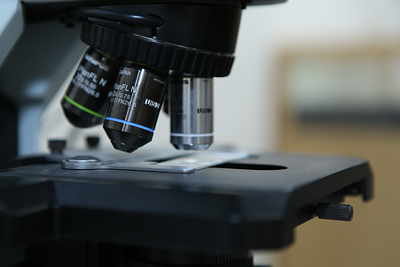
From a basic research perspective, what should GHIT strive for in its second five-year phase?
I believe that in GHIT's first years we have seen good proposals. There were some cases in which a discontinued foreign development project has restarted by joining with a Japanese company. Some of these do very well. Initially, there were more proposals that were in relatively late-stage. I believe we should support those good late-stage projects moving forward.
As GHIT's research platforms proliferated, attention was also given to exploratory research, along with basic research. Thinking far into the future, without something paving the way, when late-stage clinical trials fail, the entire body of research is considered lost. In that sense, I have been happy to see the number of proposals for early-stage research increasing.
Where does your passion for parasitology and basic research come from?
I have had many opportunities to travel around the world, and I feel that it is quite unfair that the fate of children is determined by the country in which they are born. I wondered what I could do, especially in the field of infectious diseases, to help children to grow up healthily, become productive members of the world, and fulfill their dreams.
Although it is rare for patients to suffer from parasitic diseases in Japan, a large number of people are suffering from such diseases globally. Among infectious diseases, many researchers are working on viruses and bacteria, but not as many on parasites. Since parasites are eukaryotes, antibiotics and vaccines are ineffective. Thus, I find them to be the most challenging pathogens. They are worthy opponents, worthy of research.
Furthermore, parasites are similar to cancer, and drugs developed for parasites can sometimes stop the growth of some cancerous cells. In other words, parasitology research can be applied to other fields of research.
All in all, I study parasitology because it is a challenging field and it can help transform global health. This is my motivation.
The affiliations and positions listed in this interview are at the time of publication of the interview in 2017.
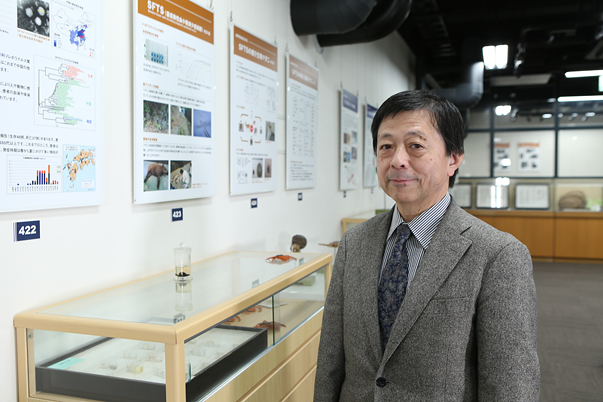
- Biography
- Prof. Kiyoshi Kita
Professor Emeritus, The University of Tokyo
Professor and Dean, Nagasaki University
School of Tropical Medicine and Global Health
Dr. Kita is Professor and Dean of Nagasaki University School of Tropical Medicine and Global Health. He was Professor of Biomedical Chemistry at The University of Tokyo’s Graduate School of Medicine (1998-2016), where he also served as Vice Dean (2011-2015). He was President of the Japanese Society of Parasitology (2003-2006) and President of Japanese Biochemical Society (2009-2011). Additionally, he was Associate Professor of Parasitology at the Institute of Medical Science within the University of Tokyo (1991-1998) and Assistant Professor of Parasitology at Juntendo University’s School of Medicine (1987-1990). He earned his PhD in 1980 from the University of Tokyo, where he subsequently served as Assistant Professor of Biological Sciences.
STAKEHOLDER INTERVIEWSARCHIVES
FUNDING
-
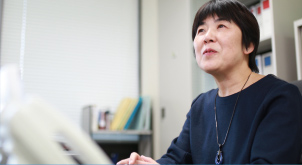
01
Dr. Naoko YamamotoSenior Assistant Minister for Global Health,
Ministry of Health, Labour and Welfare
#
-
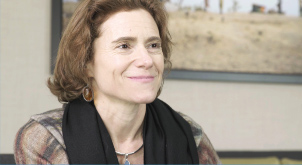
02
Dr. Hannah KettlerSenior Program Officer, Life Science Partnerships
Global Health Program, Office of the President
Bill & Melinda Gates Foundation
#
-

03
Prof. Stephen CaddickDirector, Innovations Division,
Wellcome Trust
#
DISCOVERY
-

01
Dr. David ReddyCEO
Medicines for Malaria Venture (MMV)
#
-
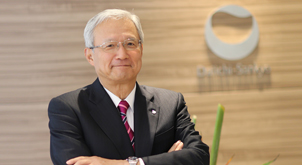
02
Mr. George NakayamaRepresentative Director,
Chairman and CEO
Daiichi Sankyo Company, Limited
#
-
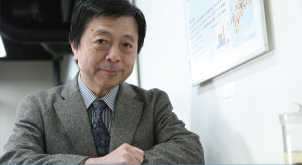
03
Prof. Kiyoshi KitaProfessor Emeritus, The University of Tokyo
Professor and Dean, Nagasaki University School of Tropical Medicine and Global Health
#
DEVELOPMENT
-

01
Mr. Christophe WeberRepresentative Director, President and CEO
Takeda Pharmaceutical Company Limited
#
-
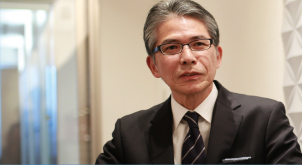
02
Mr. Yoshihiko HatanakaRepresentative Director,
President and CEO
Astellas Pharma Inc.
#
-
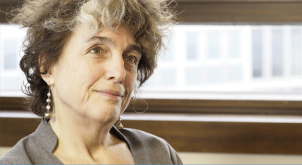
03
Dr. Nathalie Strub WourgaftMedical Director
Drugs for Neglected Diseases initiative (DNDi)
#
ACCESS
-
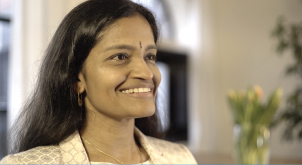
01
Dr. Jayasree K. IyerExecutive Director
Access to Medicine Foundation
#
-
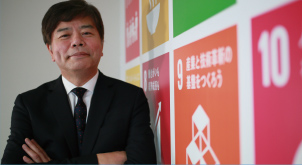
02
Mr. Tetsuo KondoDirector
United Nations Development Programme (UNDP)
Representation Office in Tokyo
#
-
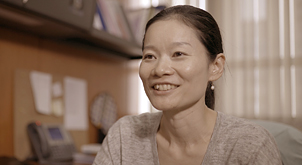
03
Dr. Aya YajimaTechnical Officer
Malaria, other Vectorborne and Parasitic Diseases Unit
Division of Communicable Diseases
World Health Organization Western Pacific Regional Office
#
POLICY
-

01
Dr. Mark DybulFormer Executive Director
The Global Fund to Fight AIDS,
Tuberculosis and Malaria
#
-

02
Dr. Seth BerkleyCEO
Gavi, the Vaccine Alliance
#
-
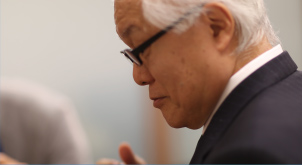
03
Hon. Prof. Keizo TakemiMember of the House of Councillors of Japan
Chairman, Special Committee on Global Health Strategy
of the Liberal Democratic Party's Policy
#

